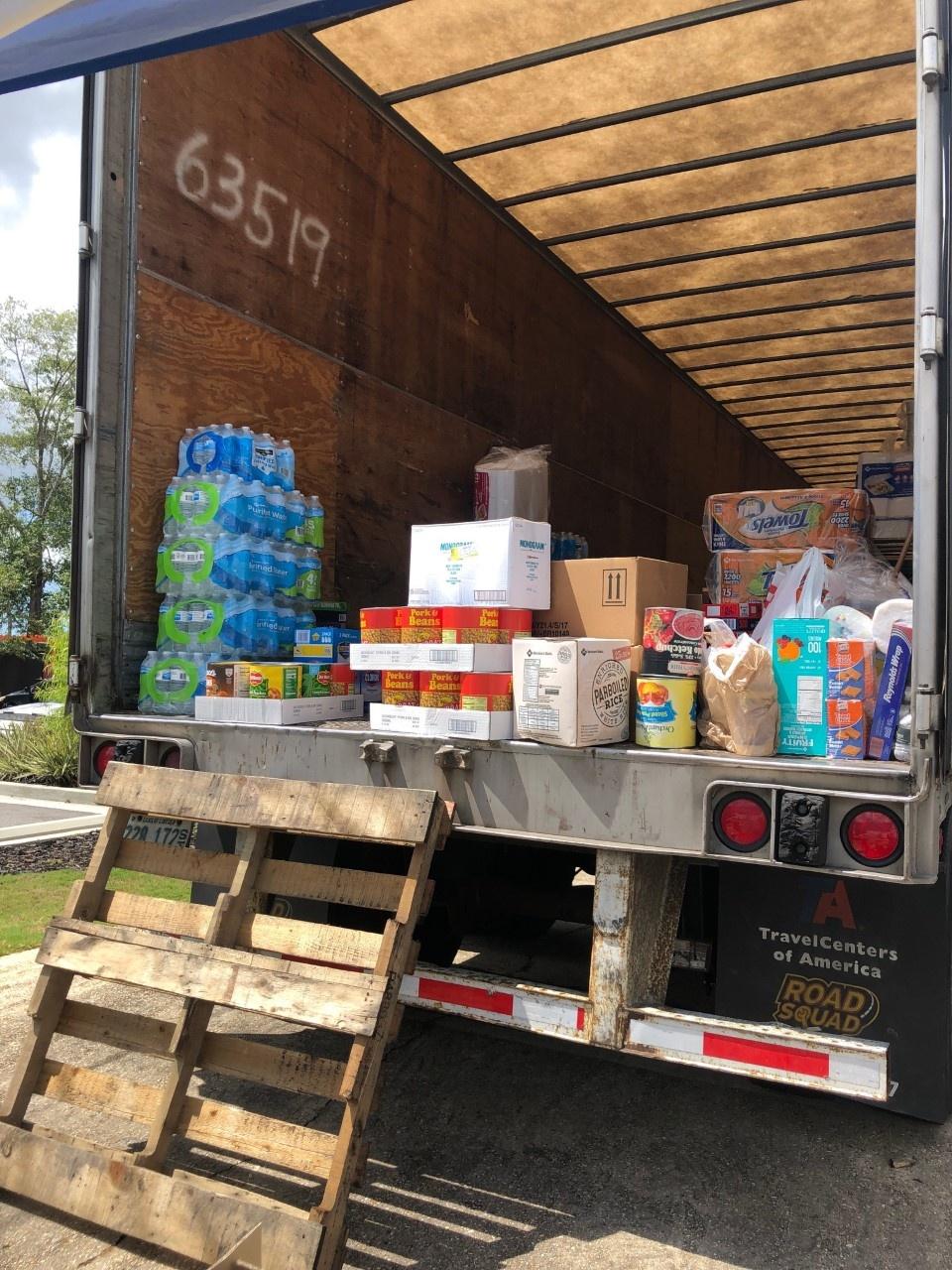The food and cooking supplies in this truck will be used by volunteers with the Giving Bak Foundation to make hot meals for relief workers and residents in areas affected by Hurricane Laura. A hot meal: it’s something many Coast residents remember cherishing after living without power, water, and other utilities for weeks after Katrina.
Earl Etheridge is the emergency management director for coastal Jackson County. He says Katrina also changed the way utilities, cities, counties, and others prepare for and respond after storms.
“The utility companies have made some major changes to how they have their stuff run, how they have their utilities placed, and the backup systems that they have for those," he says. "The cities and counties all have now in place agreements with response companies to get city and county activities back online after a storm.”
Etheridge says Jackson County’s three storm shelters, built since 2005, are also more hardened and self-contained, with the ability to sustain themselves for up to 72 hours. Mississippi Emergency Management Agency Director Greg Michel says the state’s system is now, by design, state-managed, locally executed and federally supported.
“One of the things that everyone who was here during Katrina – I was not, but those who lived here will tell you was that they had to wait long times for stuff to get there," Michel says, "and I will tell you right now that the counties today are very well prepared to at least initially sustain themselves in nearly every aspect of emergency response.”
Michel says in addition to an improved response after a storm, the local, state and federal governments have put in place mitigation measures to try to prevent the worst before it happens -- those hardened storm shelters, for example.
“If the same storm were to hit Mississippi today that hit in 2005, the effects would be different - they would be less because of the mitigation that’s been done," he says. "So, Mississippi’s come a long way. We may have to experience that again, I hope not. But if we do, I believe that we should be in a much better position to respond, should that happen.”
Hurricane Katrina also caused $125 billion in property damage. Businesses along the Gulf Coast have put in place plans to help prevent the kind of losses they saw in Katrina, and to help them recover afterwards, such as moving their data to off-site servers or cloud storage. Gulf Coast Business Council president Ashley Edwards says it’s a process that has stood them well in the years since, which have seen a number of other natural and manmade disasters.
“Resiliency and mitigation have been a big part of the recovery from Hurricane Katrina, ranging on through the oil spill and some of the issues associated with the flooding of the Mississippi River," he says. "And what I have found is that Gulf Coast businesses understand the need for contingency plans, they understand the need for resiliency preparations."
Fifteen years after Hurricane Katrina, there are now many coastal residents who didn’t experience the storm themselves, which worries some, like Jackson County emergency director Etheridge, who fear that the lessons of that devastating event are fading.
“We do have a population here now that did not go through Katrina, so they don’t have the storm savvy that the older population has," he says. "We've had to do a lot of outreach for that."
But others see lasting changes in the community, in infrastructure, planning, preparation -- and giving. Rotary Club volunteer David Weldon:
"We’ll pay this forward for the rest of our lives," says Rotary Club volunteer Weldon. "So that devastating event has created a sense of community here for the rest of the Gulf Coast that will last for a lifetime.”
While Weldon wasn’t here to see the outpouring of giving after Katrina, he is seeing it today firsthand, 15 years later, one can of vegetables and case of water at a time.




